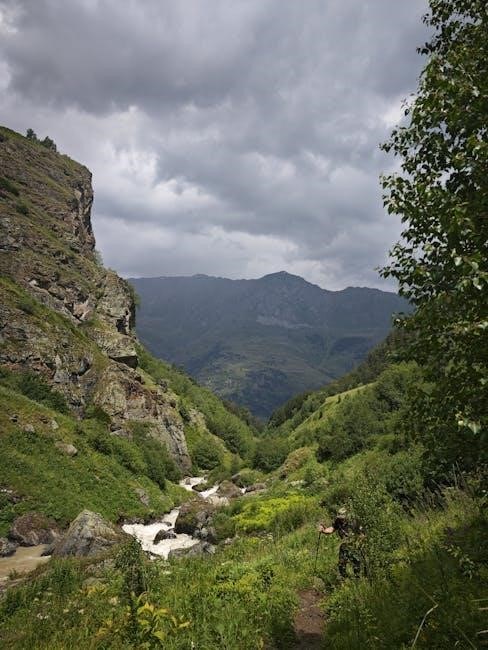The mountain dulcimer is a versatile and accessible instrument, cherished for its simple yet rich sound. A chord chart PDF serves as a valuable resource, helping players of all levels master chords and tunings efficiently, whether they’re just starting or refining their skills.
What is a Mountain Dulcimer?
The mountain dulcimer is a simple, plucked string instrument with a rich history rooted in Appalachian folk music. Typically featuring three or four strings, it is played on the lap or held upright, producing a warm, resonant sound. Its body is usually shaped like an hourglass or teardrop, and the fretboard is diatonic, making it accessible for beginners while offering depth for experienced players. The dulcimer is often tuned to open chords like DAD or DAA, which create its distinctive harmonic quality. Portable and easy to learn, it has become a beloved instrument for both solo performances and ensemble playing, celebrating its cultural heritage while inspiring modern creativity.
History and Cultural Significance
The mountain dulcimer has deep roots in Appalachian folk music, tracing its origins to 18th-century European zithers brought by immigrants. Over time, it evolved into a distinctive American instrument, cherished for its simplicity and expressive sound. Historically, the dulcimer was a symbol of cultural preservation, passed down through generations as a tool for storytelling and communal music-making. Its popularity surged in the mid-20th century during the folk music revival, introducing it to a broader audience. Today, the mountain dulcimer is celebrated as a cornerstone of Appalachian heritage, connecting modern players to their musical roots while inspiring new creative expressions.

Why Use a Chord Chart?
A chord chart is an essential tool for mountain dulcimer players, offering a clear visual guide to chord shapes and finger placements. It simplifies learning by providing a quick reference for various tunings, such as DAD, DAA, or DGD. Chord charts are particularly helpful for beginners, as they break down complex fingerings into manageable steps. Experienced players also benefit, as they can explore alternative chord variations and expand their musical repertoire. By organizing chords visually, charts save time and reduce confusion, allowing players to focus on technique and creativity. They are indispensable for mastering tunings and enhancing overall playing skills, making them a cornerstone of dulcimer education and practice.

Understanding Dulcimer Tunings
Understanding dulcimer tunings is key to mastering the instrument. Common tunings like DAD, DAA, and DGD offer unique sounds. Chord charts simplify learning these tunings and their applications.
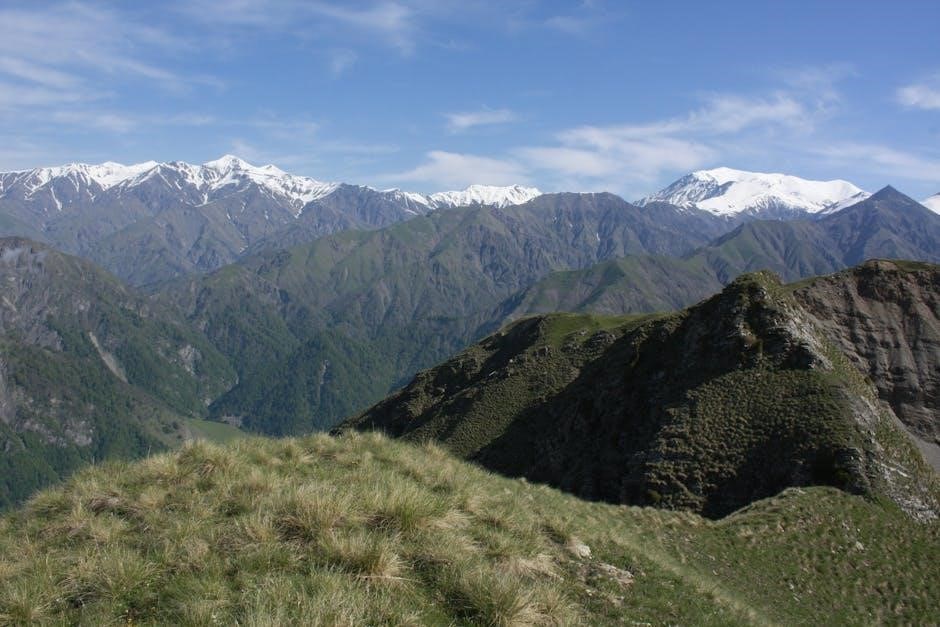
Popular Tunings for Mountain Dulcimers
The most popular tunings for mountain dulcimers are DAD, DAA, and DGD. These tunings offer distinct tonal qualities and are widely used in traditional and modern music. DAD tuning is ideal for beginners, providing a rich, full sound. DAA tuning is similar but offers a slightly different tonal character. DGD tuning is versatile, allowing for a wide range of musical styles; Each tuning has its own chord charts, which help players navigate the instrument’s fretboard. By understanding these tunings, players can explore various musical genres. Resources like chord charts and workshops simplify learning these tunings, making them accessible to all skill levels.
DAD Tuning: Basics and Benefits
DAD tuning is one of the most popular configurations for the mountain dulcimer, known for its simplicity and rich tonal quality. It consists of strings tuned to D, A, and D, creating a full, resonant sound. This tuning is highly accessible for beginners, as it allows for easy chord shapes and finger placements. The DAD tuning is versatile, suitable for various musical genres, from traditional folk to modern compositions. Its benefits include a strong, clear bass and a bright treble, making it ideal for both solo playing and accompaniment. Resources like chord charts and workshops often emphasize DAD tuning, making it a foundational choice for players of all skill levels.
DAA and DGD Tunings: Key Differences
DAA and DGD tunings offer distinct voices for the mountain dulcimer, differing from the popular DAD tuning. DAA tuning (D-A-A) provides a bright, clear tone with a strong mid-range, often used for modal and traditional music. In contrast, DGD tuning (D-G-D) creates a deeper, resonant sound, ideal for blues and folk styles. Both tunings expand the instrument’s versatility but require specific chord charts for accuracy. DAA is known for its ease in playing melody lines, while DGD emphasizes harmonic richness. Players often explore these tunings to diversify their sound, using chord charts tailored to each configuration for optimal results.
Chord Chart Basics

Chord charts provide a visual guide for playing chords on the mountain dulcimer, covering various tunings like DAD, DAA, and DGD. They display chord shapes and finger placements clearly, helping both beginners and experienced players to learn and master new chords efficiently.
How to Read a Dulcimer Chord Chart
A dulcimer chord chart is a visual guide that maps out chord shapes on the fretboard. It typically shows the fretboard as a grid, with vertical lines representing strings and horizontal lines indicating frets. Numbers within the grid specify which frets to press, while circles often denote open strings. Chords are arranged by tuning (e.g., DAD, DAA, or DGD), and charts may include variations for different keys or tunings. For mountain dulcimers, chords are sometimes reversed or mirrored. Beginners should start with primary chords like D, A, and G, gradually exploring minor and seventh chords. Practice matching chord shapes to their sounds, and always reference the chart alongside your instrument to ensure accuracy.
Chord Shapes and Finger Placements
Chord shapes on the mountain dulcimer are patterns of finger placements that produce specific chords. These shapes are illustrated in chord charts, showing which strings to press and at which frets. For example, in DAD tuning, the open strings form a D chord, so no finger placement is needed. To play an A chord, place your finger on the second fret of the middle string. Minor chords, like A minor, often involve slight variations of major chord shapes. Proper finger placement is crucial to avoid muting strings or playing out of tune. Practice chord transitions to build muscle memory and ensure smooth playing. Chord charts provide a clear visual guide for mastering these shapes.
Primary and Secondary Chords Explained
Primary chords are the foundational chords in a tuning, such as D, A, and G in DAD tuning. They are played without additional finger placements, utilizing the open strings. Secondary chords, like minor or seventh chords, require specific finger placements beyond the basic tuning. These chords enhance musical depth and emotion. Chord charts provide clear visuals for both types, ensuring players can distinguish between them. For example, in DAD tuning, D major is a primary chord, while D minor involves pressing the first fret on the middle string. Understanding these distinctions helps players expand their musical repertoire and versatility. Chord charts are essential for mastering these chords efficiently.
DAD Tuning Chord Chart
DAD tuning is a favorite among dulcimer players, offering a rich harmonic palette. This chord chart provides clear visuals for major chords, finger placements, and variations, aiding players in navigating the fretboard with ease and precision for both simple and complex compositions.
Major Chords in DAD Tuning
Major chords in DAD tuning are foundational and versatile, offering a bright, cheerful sound. The chord chart provides a clear layout of note positions and finger placements for D, A, B, C, E, F#, and G major chords. D Major is the most common, often used in traditional songs, and is played without fretting any strings. A Major and B Major chords are also frequently used, with specific fret positions highlighted in the chart. Players can achieve these chords by pressing the appropriate strings at the indicated frets or using open strings. The chart visually maps these chords, making it easy to learn and play them effectively for various musical styles.
Minor and Seventh Chords in DAD Tuning
Minor and seventh chords in DAD tuning add depth and emotion to your playing. The chord chart provides detailed layouts for A minor (Am), D minor (Dm), and E minor (Em), as well as A7, D7, and E7 chords. These chords are essential for creating melancholic or bluesy tones. For example, A minor is played by fretting the middle string at the first fret, while D minor uses the bass string at the second fret. Seventh chords, like A7, are formed by adding a flattened seventh note to the major chord shape. The chart also offers variations, allowing players to explore different voicings and substitutions to enhance their musical expression.

Power Chords and Their Applications
Power chords are essential for creating strong, dynamic sounds on the mountain dulcimer. In DAD tuning, these chords are simplified, focusing on root and fifth intervals; The chart highlights power chords like D, A, and E, which are played by fretting adjacent strings. For example, a D power chord is formed by playing the open bass string and the middle string at the second fret. These chords are versatile, suitable for folk, rock, and blues styles. They are particularly useful for strumming rhythms and creating a solid harmonic foundation. Using power chords, players can add intensity and drive to their music, making them a key element in both accompaniment and melody playing.

DAA and DGD Tuning Chord Charts
DAA and DGD tunings offer unique harmonic possibilities. Chord charts for these tunings provide clear fingerings and note placements, making learning easier. Both tunings are popular for their versatility in various musical styles, with DAA often used in Ionian modes and DGD in Mixolydian modes. The charts typically include major, minor, and seventh chords, as well as power chords, allowing players to explore a wide range of sounds. Resources like Stephen Seifert’s chord sheets and workshops by Carol Walker further support mastering these tunings. These charts are indispensable for both beginners and advanced players aiming to expand their musical repertoire.
Chords for DAA Tuning
DAA tuning offers a bright and versatile sound, ideal for playing in Ionian modes. Chord charts for DAA tuning detail finger placements for major, minor, and seventh chords. Common chords include D, G, A, Em, and Bm, with variations for seventh chords like D7 and G7. The charts often include power chords, which are essential for rhythmic playing. Resources like Stephen Seifert’s chord sheets provide clear layouts, showing note placements and fingerings. These charts are mirrored for mountain dulcimers, ensuring ease of use. Whether playing traditional tunes or modern songs, DAA tuning chord charts are invaluable for mastering this popular tuning. They cater to all skill levels, from beginners to advanced players.
Chords for DGD Tuning
DGD tuning is a popular alternative for mountain dulcimer players, offering a rich, resonant sound. Chord charts for GGD tuning provide finger placements for major, minor, and seventh chords. Common chords include G, D, Em, C, and Am, with variations for seventh chords like G7 and D7. These charts often highlight power chords, which are useful for rhythmic playing. Resources like Stephen Seifert’s chord sheets and note placement guides simplify learning. The charts are mirrored for mountain dulcimers, ensuring clarity. Whether playing traditional or modern music, GGD tuning chord charts are essential for mastering this versatile tuning, catering to both beginners and experienced players.
Comparing Chords Across Tunings
Comparing chords across different mountain dulcimer tunings, such as DAD, DAA, and DGD, reveals both similarities and differences. While some chords remain consistent, others require unique finger placements due to varying string arrangements. For example, a D chord in DAD tuning is played open, but in DAA or DGD, it may involve different fret positions. Chord charts for each tuning highlight these variations, allowing players to adapt seamlessly. Power chords, for instance, remain relatively consistent across tunings but are used differently in musical contexts. By studying chord charts, players can master the nuances of each tuning and expand their musical versatility, ensuring a smooth transition between tunings while maintaining musicality.
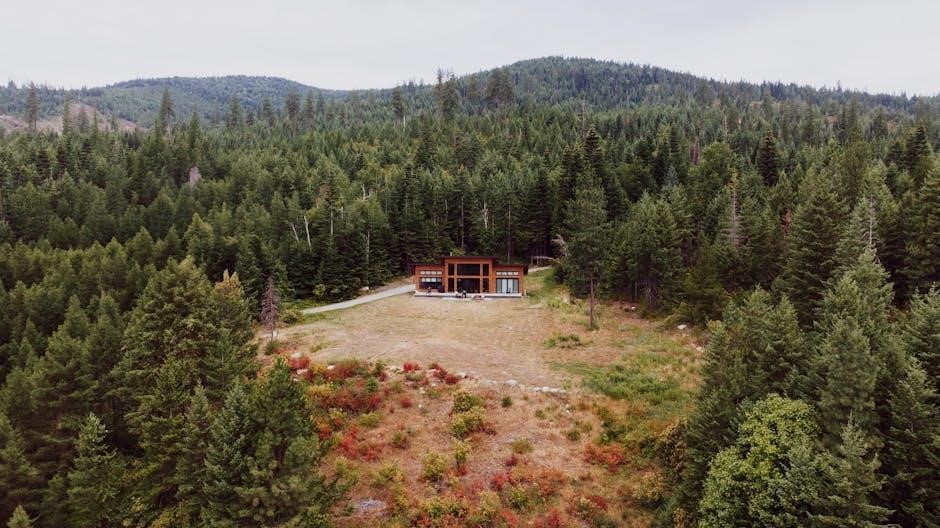
Advanced Techniques
Mastering advanced techniques like barre chords, complex chord progressions, and improvisation enhances your mountain dulcimer playing. These methods, guided by chord charts, expand your musical expression and versatility.
Barre Chords on the Mountain Dulcimer
Barre chords on the mountain dulcimer involve pressing multiple strings with one finger, creating a movable chord shape. They expand your musical range but can be challenging due to finger strength and placement. In DAD tuning, common barre chords like F and C are often used to add depth to songs. Chord charts provide visual guides for finger placement, helping players navigate these complex shapes. Regular practice and proper technique are essential for mastering barre chords, which unlock new musical possibilities and enhance your overall dulcimer playing experience.
Chord Progressions for Common Songs
Chord progressions are essential for playing popular and traditional songs on the mountain dulcimer. By using a chord chart PDF, you can identify the sequences of chords needed for your favorite tunes. Common progressions like I-IV-V and I-V-vi-IV are widely used in folk music. For example, songs in DAD tuning often use D, G, and A chords, while others may incorporate minor chords for emotional depth. Chord charts simplify learning by showing finger placements for each chord. This makes it easier to transition smoothly between chords and play songs confidently. Practice chord progressions regularly to build muscle memory and enhance your playing skills. Chord charts are invaluable for mastering these sequences and expanding your repertoire of songs.
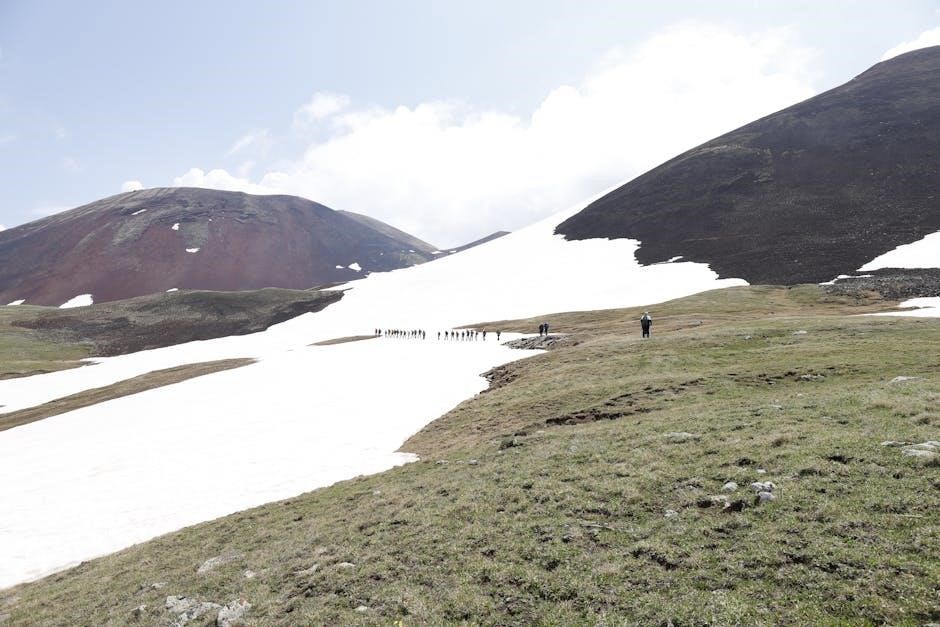
Using Chord Charts for Improvisation
Chord charts are a powerful tool for improvisation on the mountain dulcimer. They provide a visual guide to chord shapes and finger placements, allowing you to explore new sounds freely. By understanding the chord progressions and relationships, you can create your own melodies or experiment with different tunings. Start with familiar chord sequences, then gradually introduce variations to add complexity. Chord charts also help you identify key transitions, making it easier to move between chords smoothly. Practice improvising within a scale or mode, using the chart as a reference to stay in tune. This approach builds confidence and expands your creative possibilities on the dulcimer.
Mastering mountain dulcimer chords is achievable with practice and the right resources. Explore chord charts, workshops, and guides to enhance your playing skills and creativity.
Final Tips for Mastering Dulcimer Chords
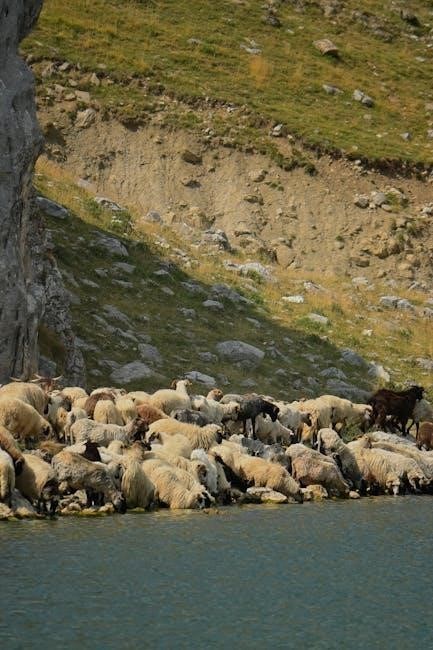
Start with basic chords and gradually explore more complex ones. Practice regularly, using chord charts as a guide to ensure accuracy. Experiment with different tunings like DAD, DAA, and DGD to expand your musical range. Focus on finger placement and string selection to produce clear, resonant tones. Use online resources and tutorials to refine your technique. Join dulcimer communities or workshops for inspiration and feedback. Keep a chord chart PDF handy for quick reference during practice. Most importantly, stay consistent and enjoy the creative process of mastering this beautiful instrument.
Recommended Resources for Further Learning
Explore Stephen Seifert’s chord charts and Dusty’s Primer for a comprehensive guide to getting started. The Mountain Dulcimer Society of Dayton offers workshops and materials for all skill levels. Carol Walker’s workshops provide in-depth instruction on primary and secondary chords. Online platforms like GitHub host repositories with chord charts and theoretical resources. Additionally, DGD note placement charts and fingerings are available for advanced players. Join dulcimer communities and forums to connect with other musicians and share knowledge. Utilize mountain dulcimer chord chart PDFs for quick access to chord shapes and tunings. These resources will enhance your learning journey and help you master the instrument effectively.
